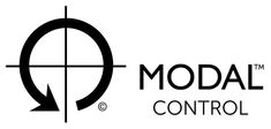Island predator eradication projects demonstrate the challenges of successfully planning and removing invasive predators so vulnerable wildlife populations can recover. Between August 2018 and February 2019 we made an extensive research trip to seven inhabited offshore islands to visit predator eradication projects and learn first hand from the people involved with the projects the challenges they have faced, the successes they have achieved and the frustrations they have overcome. You can read more about each of the projects that we visited through our Island Galleries where we have provided some insight into each project. So different projects could be compared and contrasted, the islands were chosen to include:
Aotea Great Barrier is a very accessible island and is a salient example of the impacts that introduced mammalian predators have had, and continue to have, on offshore islands. Historic records confirm the extinction and endangerment of a significant proportion of its original fauna. Rakiura Stewart Island is an exemplar of an island community that is not prepared to see their island's fauna further impoverished by invasive predators and are mobilising a bold project to disassemble and eradicate a predator guild. This endeavour is focused on six species of predator. Lord Howe Island has over nine years developed an audacious project to become the largest inhabited island in the world to eradicate rodents. Work is now underway to determine if it has been successful making it is a great place to understand the risks to success with which every predator eradication project must grapple. St Agnes is a tiny island in the United Kingdom's Isles of Scilly were rats have been successfully eradicated. Here the community now maintain a re-invasion surveillance programme that demonstrates both the challenges of maintaining a rat free environment in an increasingly mobile world, but also the tangible ecological gains that flow from a successful predator eradication. The Orkney Islands have recently suffered the establishment of a novel predator. These historic islands clearly illustrate the risks of colonisation that fast and frequent transport represents to island biosecurity and the response that is needed to counter this when it materialises. Lewis and Harris in the Scottish Outer Hebrides is a case study of how low-risk trapping can successfully drive an invasive predator eradication to minimise risks to non-target species, even on a very large island with challenging topography. It also illuminates that assumptions about the cost-effectiveness of aerial poison based eradications need to be carefully evaluated. North Uist, also in the Outer Hebrides, provides valuable lessons on the need to include local residents and other interested parties in any predator eradication project. Project methodology can challenge people's values and implementation can disrupt people's lives. Including the community in any environmental project leads to better and more durable outcomes. These seven projects together provide significant insight into the current technologies and methodologies that underpin contemporary predator management on the islands of the world. They also suggest ways these technologies and methodologies can be reimagined and re-engineered so more outcomes can be achieved with less inputs to better protect vulnerable populations of island fauna.
0 Comments
Your comment will be posted after it is approved.
Leave a Reply. |
What's in a Name?The familiar saying "A bird in the hand is worth two in the bush" warns about the risks that come with trying to achieve more by challenging the status quo. Categories
All
Archives
January 2022
|
|
Copyright © Synovus Technology 2018 - 2023
All Rights Reserved |

 RSS Feed
RSS Feed
